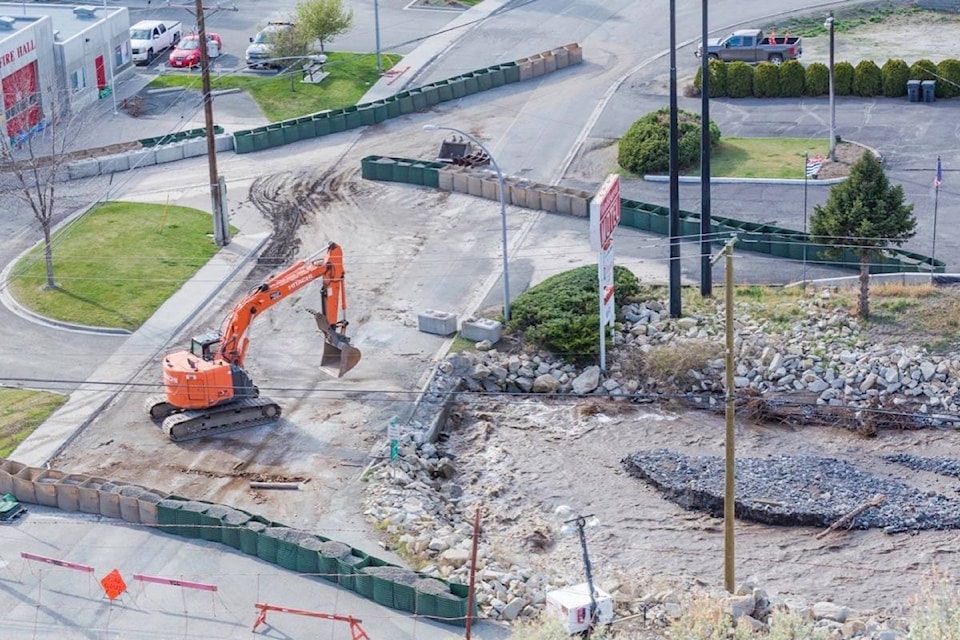A week after learning that it had received nearly $200,000 in funding for flood mitigation measures on Old Cariboo Road, the Village of Cache Creek has received a further $147,000 in order to produce a flood mitigation plan for the community.
The announcement was made last week, when 24 local governments and First Nations communities around the province received $3.46 million in provincial funding through the Community Emergency Preparedness Fund (CEPF). The CEPF is designed to help communities prepare for, and respond to, disasters.
In 2017 the Village received $150,000 from the Province in order to produce a flood model for the community. “The model was necessary so that we could apply for this grant,” explains Cache Creek Chief Administrative Officer Martin Dalsin. “We needed the model before we could come up with a plan, so we would know what the impacts [of flooding] would be at what flow volumes.”
With the funding for the flood mitigation plan in place, Dalsin says that the next step is to sit down with the engineers at TRUE Consulting, who have been retained to carry out the work. However, he says that residents will have a chance to have input into the plan.
“There will be multiple opportunities for stakeholder input, both the public and businesses. The plan will primarily be designed to identify what issues are being experienced due to flooding, and what information do people need to prepare to deal with that.
“The engineers will work on a plan that will be reviewed by council and staff, and at the end of it we hope that the community has a better understanding of what the issues are and how to mitigate against flooding events, and we’ll have a long-term plan so that flooding impacts are minimized.”
He notes that mapping will have to be updated annually, because both Cache Creek and the Bonaparte River change course when there are high water events, especially when they are long-lasting. The mapping will use LIDAR (Light Detection and Ranging) imagery for real-time views of what is happening on the ground, with the maps updated from there.
The Fraser Basin Council recently completed LIDAR mapping of the entire Thompson watershed, in order to obtain an accurate and up-to-date picture of the region, and Dalsin says that project has already used some of the work carried out by the Village’s consultants.
“It’s information sharing, and it benefits everyone. We’re trying to share as much information as we can.”
Dalsin says there is no timetable for when the work will start. “We’ll talk to the consultants. When we submitted the grant application, COVID-19 wasn’t a thing, so now we’ll have to amend it. We had talked about having something like a trade show for the public at the Community Hall, but now we can’t do that, so we’ll have to see how we can do it safely. That probably won’t happen until the fall, because in summer you miss too many people, and businesses are focused on their summer traffic, not on giving us information.”
The results of the study will determine what gets done regarding flood mitigation.
“We’ll set up a list and see what the priorities are and how much they will cost, then see where we can find the money. It will be a phased approach, with high-priority areas coming first. If we’re lucky, this will happen within two years.
“We’re hoping there will be money out there. Most of the [immediate] response [to flood events] is covered by Emergency Management BC funding, and afterwards up to 80 per cent of costs are covered by Disaster Financial Assistance, so it’s costing the Province several hundred thousand dollars each time [flooding] happens.
“It’s happened five times in six years, so we’re hoping to get money in advance, such as the grant we just got, but we need bigger funding for larger projects.”
editorial@accjournal.ca
Like us on Facebook and follow us on Twitter
